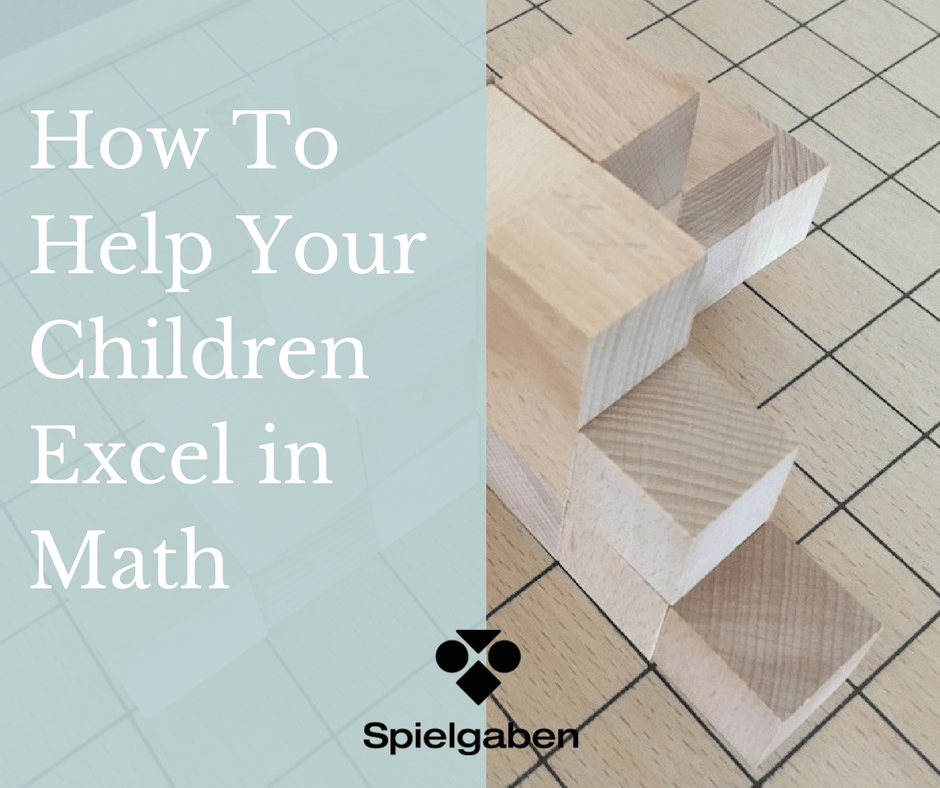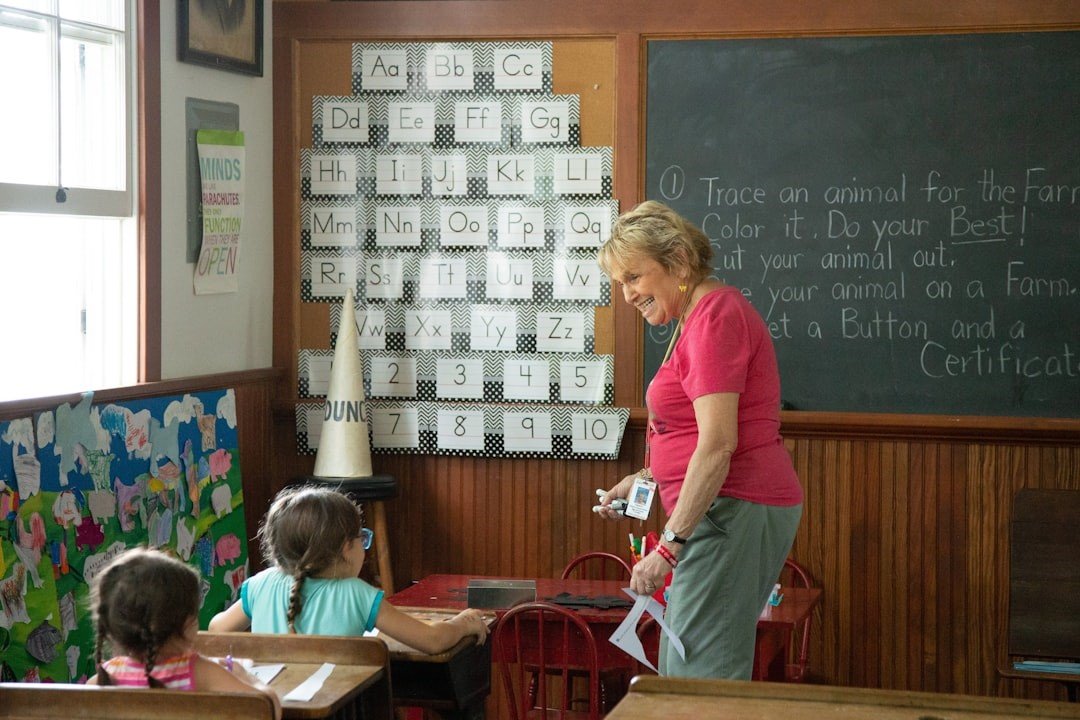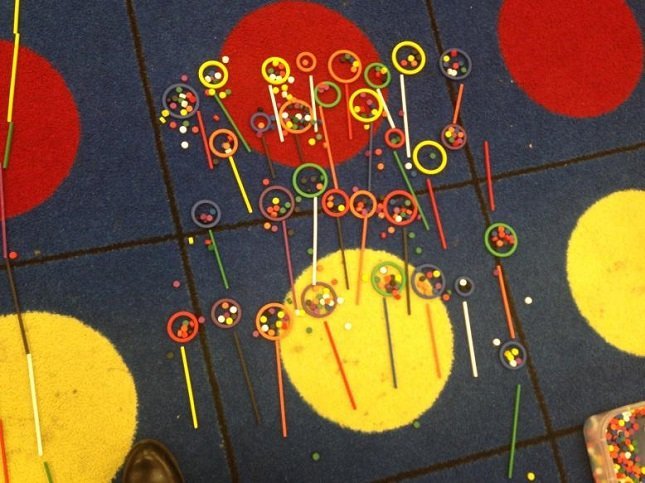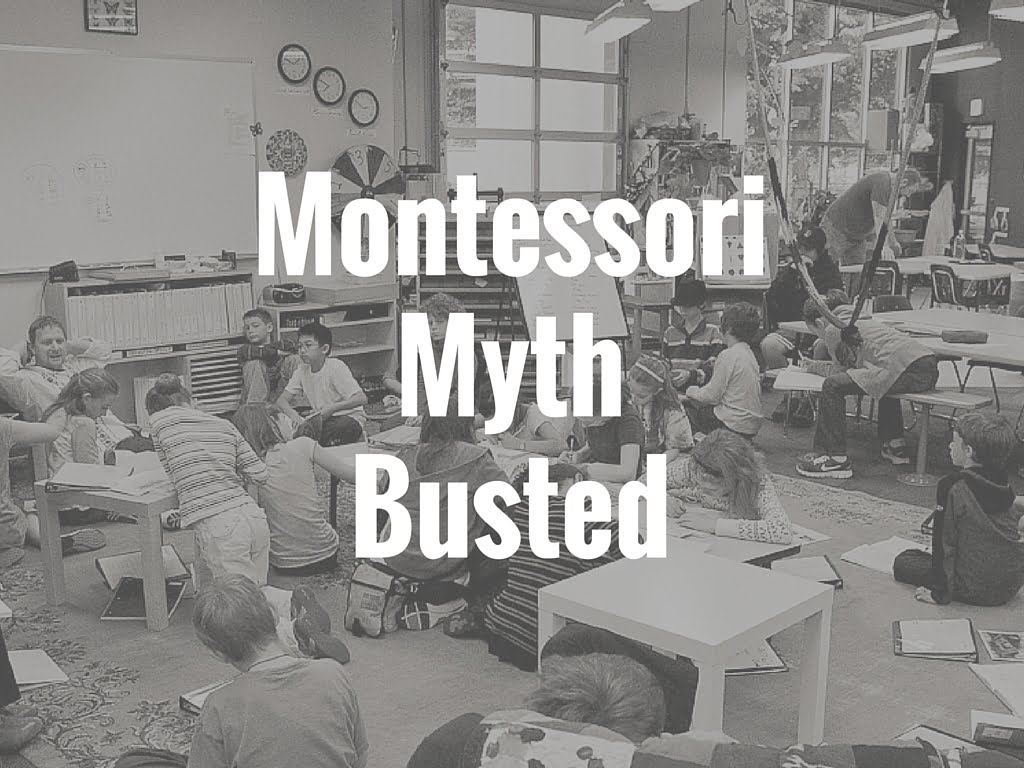How To help your children excel in Mathematics
In this article, we will discuss 2 main causes that children lose interest in mathematics and how to overcome & even excel in Math by learning 5 principles and practices.
Before we start, what is Mathematics, Really?
Mathematics is a human activity, a social phenomenon, a set of methods used to help illuminate the world, and it is part of our culture.
Reubon Hersh, a philosopher and mathematician, has written a book called “What is Mathematics, Really?” in which he explores the true nature of mathematics and makes an important point: people don’t like mathematics because of the way it is misrepresented in school. The math that children experience in school is an impoverished version of the subject and it bears little resemblance to the mathematics of life or work or even the mathematics in which mathematicians engage.
Those children who do learn about the true nature of mathematics are very fortunate, and it often shapes their lives. Margaret Wertheim, a science reporter for The New York Times, reflects upon an Australian mathematics classroom from her childhood and the way that it changed her view of the world:
“When I was ten years old I had what I can only describe as a mystical experience. It came during a math class. We were learning about circles, and to his eternal credit our teacher, Mr. Marshall, let us discover for ourselves the secret image of this unique shape: the number known as pi. Almost everything you want to say about circles can be said in terms of pi, and it seemed to me in my childhood innocence that a great treasure of the universe had just been revealed. Everywhere I looked I saw circles, and at the heart of every one of them was this mysterious number. It was in the shape of the sun and the moon and the earth; in mushrooms, sunflowers, oranges, and pearls; in wheels, clock faces, crockery, and telephone dials. All of these things were united by pi, yet it transcended them all. I was enchanted. It was as if someone had lifted a veil and shown me a glimpse of a marvelous realm beyond the one I experienced with my senses. From that day on I knew I wanted to know more about the mathematical secrets hidden in the world around me.”
How many students who have sat through math classes would describe mathematics in this way? Why are they not enchanted, as Wertheim was, by the wonder of mathematics, the insights it provides into the world, the way it elucidates the patterns and relationships all around us?
It is because they are misled by the image of math presented in school mathematics classrooms and they are not given an opportunity to experience real mathematics. Ask most school students what math is and they will tell you it is a list of rules and procedures that need to be remembered. Their descriptions are frequently focused on calculations.
Yet, as Keith Devlin, mathematician and writer of several books about math, points out, mathematicians are often not even very good at calculations as they do not feature centrally in their work. Ask mathematicians what math is and they are more likely to describe it as the study of patterns.
Bringing mathematics back to life for schoolchildren involves giving them a sense of living mathematics. When students are given opportunities to ask their own questions and to extend problems into new directions, they know mathematics is still alive, not something that has already been decided and just needs to be memorized. If teachers or parents pose and extend problems of interest to students and children, they enjoy mathematics more, they feel more ownership of their work, and they ultimately learn more.
Let’s dig deep into main problems with passive approach to mathematics.
Problem #1) Learning without Thought
When typical children or students are asked what it takes to be successful in math class, and they almost always give the exact same answer: pay careful attention. In math, you have to remember, memorize the formula, apply it, and that’s it, in other subjects you can think about it.”
Students taught through passive approaches follow and memorize methods instead of learning to inquire, ask questions, and solve problems.
This passive approach, which characterizes math teaching, is widespread and ineffective.
When students try to memorize hundreds of methods, as students do in classes that use a passive approach, they find it extremely hard to use the methods in any new situations, often resulting in failure on exams as well as in life. The secret that good mathematics users know is that only a few methods need to be memorized, and that most mathematics problems can be tackled through the understanding of mathematical concepts and active problem solving.
The following response from Kate, a girl taking calculus in a traditional class, resembles many young people have been interviewed:
“We knew how to do it. But we didn’t know why we were doing it and we didn’t know how we got around to doing it. Especially with limits, we knew what the answer was, but we didn’t know why or how we went around doing it. We just plugged into it. And I think that is what I really struggled with – I can get the answer, I just don’t understand why.”
Young people are naturally curious and their inclination –at least before they experience traditional teaching – is to make sense of things and to understand them. Most math classes rid students of this worthy inclination. Kate was at least fortunate to still be asking “Why?” even though she, like others, was not given opportunities to understand why the methods worked. Children begin school as natural problem solvers and many studies have shown that students are better at solving problems before they attend math classes. They think and reason their way through problems, using methods in creative ways, but after a few hundred hours of passive math learning students have their problem-solving abilities drained out of them. They think that they need to remember the hundreds of rules they have practiced and they abandon their common sense in order to follow the rules.
Problem #2) Learning without Talking
Another major problem with passive approaches to mathematics is that students work in silence. They may, to some, seem to be the optimum learning condition, but in fact this is far from the truth. Students sit in rows at individual desks, silently watching the teacher work on math and silently copying the methods.. But this approach is flawed for a number of reasons. One problem is that students often need to talk through methods to know whether they really understand them. Methods can seem to make sense when people hear them, but explaining them to someone else is the best way to know whether they are really understood.
Sarah Flannery is a young Irish woman who won the European Young Scientist of the Year award for the development of a “breathtaking” mathematical algorithm. In her autobiography she write about the different conditions that promoted her learning, including the “simple math puzzles” that she worked on as a child. Flannery writes: “The first thing I realized about learning mathematics was that there is a hell of difference between, on the one hand, listening to math being talked about by somebody else and thinking that you are understanding, and, on the other, thinking math and understanding it yourself and talking about it to someone else. Reuben Hersh, an American mathematician, wrote the book “What is Mathematics, Really?” In it he also talks about the source of his mathematical understanding, saying that “Mathematics is learned by computing, by solving problems, and by conversing, more than by reading and listening.”
Both of these successful mathematicians highlight the role of talking over listening, yet listening is the signature of the passive mathematics approaches that are the norm for students. The first faulty learning condition that Flannery describes (“listening to math being talked about by someone else”) is the quintessence of passive math approaches. The second condition that enabled her to understand (“thinking about math” and “talking about it to someone else”) is what students should be doing in classrooms and homes and is essential to the active approach.
When students listen to someone laying out mathematical facts (a passive act that does not necessarily involve intellectual engagement), they usually think that it makes sense, but such thoughts are very different from understanding.
Another problem with the silent approach is that it gives students the wrong idea about mathematics. One of the most important parts of being mathematical is an action called reasoning. This involves explaining why something makes sense and how the different parts of a mathematical solution lead from one to another. Students who learn to reason and to justify their solutions are also learning that mathematics is about making sense. Whenever students offer a solution to a math problem they should know why the solution is appropriate, and they should draw from mathematical rules and principles when they justify the solution rather than just saying that a textbook or a teacher told them it was right. Reasoning and justifying are both critical acts, and it is very difficult to engage in them without talking. If students are to learn that being mathematical involves making sense of their work and being able to explain it to someone else, justifying the different moves, then they need to talk to each other and to their teacher.
Another reason that talking is so critical in mathematics classroom is that when students discuss mathematics, they come to know that the subject is more than a collection of rules and methods set out in books – they realize that mathematics is a subject that they can have their own ideas about, a subject that can invoke different perspectives and methods, and a subject that is connected through organizing concepts and themes.
This is important for all learners but perhaps none more so than adolescents. If young people are asked to work in silence and they are not asked to offer their own ideas and perspectives, they often feel disempowered and disenfranchised, ultimately choosing to leave mathematics even when they have performed well.
When students are asked to give their ideas on mathematical problems, they feel that they are using their intellect and that they have responsibility for the direction of their work, which is extremely important for young people.
Key strategies and ways of working
One of the most difficult barriers many parents face is their children’s relationship with mathematics, especially if children have negative experiences in school, which many do. And this relationship is something to be taken very seriously as mathematics, has the power to crush children’s confidence, with negative experiences in school not only making children feel inadequate and stupid but denying them access to a subject they will need for the rest of their lives.
Fortunately, there are some clear principles about learning mathematics that could help parents greatly, both in early work with very young children and in work with older children who are having a hard time in school.
Now, we will share some principles and ways of working.
Solution #1) Use Number Flexibly
In an influential research study, published in 1994, two British researchers, Eddi Gray and David tall, identified the reasons why many children struggle with math. The results were so important that they should be shouted from the rooftops and posted in every math classroom.
Gray and Tall conducted a study of seventy-two students between the ages of seven and thirteen. They asked teachers in England to identify children fro their classes whom they regarded as above average, average, or below average, and they interviewed the seventy-two children. The researchers gave children various addition and subtraction problems to do. One type of problem required adding a single digit number, such as 4, to a two-digit number such as 13. They then recorded the different strategies children used. These strategies turned out to be critical in predicting children’s achievement.
For example, let’s take 4 + 13.
One strategy for solving this addition problem is called “counting all.” With this strategy students look at the 4 dots and count them (1-2-3-4); they then look at 13 dots and count them (1-2-3-4-5-6-7-8-9-10-11-12-13); they then look at all the dots and count them, from 1 to 17. This is often the first strategy that children use as they are learning to count.
A sophisticated strategy that develops from “counting all’ is called “counting on.”
A student using this strategy would count from 1 to 4 and then continue from 5 to 17.
A third strategy is called “known facts” – some people just know, without adding or thinking, that 4 and 13 is 17 because they remember these number facts.
The fourth strategy is called “derived facts.” This is where students decompose and recompose the numbers to make them more familiar numbers for adding and subtracting. So they may say, “Well, I know 10 and 4 is 14,” and then they add on the 3.
This sort of strategy of decomposing and recomposing numbers is helpful when you are given calculations to do, especially when doing them in your head. For example, you may need to know the answer to 96 + 17. To most people that is a nasty addition sum that looks daunting, but if 4 is taken from the 17 first and added to the 96, the problem becomes 100 + 13, which is much more reasonable. People who are good at mathematics decomposing and recompose numbers all the time. This is the strategy that the researchers called “derived facts” as the students changed the numbers into ones that they knew the answers to, by decomposing and then recomposing the numbers.
The researchers found that the above-average children in the 8+ age group counted on in 9 percent of the cases, they used known facts 30 percent of the time, and they used derived facts 61 percent of the time. In the same age group the students who were below average counted all 22 percent of the time, counted on 72 percent of the time, used known facts 6 percent of the time, and never used derived facts. It was this absence of derived facts that was critical to their low achievement.
When the researchers looked at ten-years-olds, they found that the below-average group used the same number of known facts as the above-average eight-year-olds, so you could think of them as having learned more facts over the years but, noticeably, they were still not using derived facts. Instead, they were still counting, What we learn from this, and from other research, is that the high-achieving students don’t just know more, but they work in very different ways – and, critically, they engage in flexible thinking when they work with numbers, decomposing and recomposing numbers.
The researchers drew two important conclusions from their findings. One was that low achievers are often thought of as slow learners, when in fact they are not learning the same things slowly. Rather, they are learning a different mathematics. The second is that the mathematics that low achievers are learning is a more difficult subject.
As an example of the very difficult mathematics that the below-average children were using, consider the strategy of counting back, which they frequently used with subtraction problems.
For example, when they were given problems such as 16 -13, they would start at the number 16 and count down 13 numbers (16-15-14-13-12-11-10-9-8-7-6-5-4-3). The cognitive complexity of this task is enormous and the room for mistakes is huge. The above-average children did not do this. They said, “16 take away 10 is 6, and 6 take away 3 is 3,” which is much easier. It seemed from the research that the students who were achieving at high levels were those who had worked out that numbers can be flexibly broken apart and put together again. The problem for the low-achieving children was simply that they had not learned to do this. The researchers also found that when low achievers failed at their methods, they did not change their methods; instead, they fell back into counting more and more.
Indeed, many of the low achievers became very efficient with small numbers, which lulled them into a sense of security. The low-achieving students came to believe that in order to be successful, they needed to count very precisely. Unfortunately, problems become more and more difficult in mathematics so as time went on, the low achievers were trying to count in more and more complex situations. Meanwhile, the high achievers had forgotten counting strategies and were working with numbers flexibly. This is an easier task, but it is also a more important way of working in mathematics. As the low achievers continued to count, the high achievers worked flexibly and pulled further and further ahead.
Not surprisingly, the researchers found that the lower achieving students who were not using numbers flexibly were also missing out on other important mathematical activities. For example, one of the important things that people do as they learn mathematics is compress ideas. What this means is, when we are learning a new area of math, such as multiplication, we may initially struggle with the methods and the ideas and have to practice lots of examples, but at some point things become clearer, at which time we compress what we know and move on to harder ideas. At a later stage when we need to use multiplication, we can use it fairly automatically, without thinking about the process in depth.
For example, you could ask a child to work out 17 x 5 in their heads without the user of pen and paper. This is a problem that looks difficult but becomes much easier when the numbers are flexibly moved around. So, for example, with 17 x 5 I could work out 15 x 5. I can do this in my head more easily as 10 x 5 is 50 an 5 x 5 is 25, giving me 75. I then need to remember to add 10 as I only worked out 15 x 5 and I need 2 more 5’s. This gives me my answer of 85. Another way of solving the problem is not to work out 17 x 5, but to work out 17 x 10, which is 170,and then halve it. Half of 100 is 50 and half of 70 is 35 so I would get 85. As people work on problems like these, they become used to using numbers flexibly as well a generally sharpening their mental math skills. The problem I would set children when working on number talks is to find as many ways as possible of working out the answers. Most children will find this challenging and fun.
Students who are not taught to flexibly use numbers often cling to methods and procedures they are taught, believing that each method is equally important and must simply be remembered and reproduced carefully. For these students the mathematics they are learning is much more difficult.
Low-achieving students who struggle to master more and more procedures, without using numbers flexibly or compressing concepts, are working with the wrong model of mathematics.
These students need to work with someone who will change their worldview of mathematics and show them how to use numbers flexibly and how to think about mathematical concepts.
But instead of working with people who will change the students’ approach, what typically happens is that they get labeled as low-achieving students and people decide they need more drill, putting them into classes where they repeat methods over and over again. This is the last thing these students need and it simply feeds into their faulty worldview of math. Instead, they need opportunities to play with numbers, and to develop “number sense.”
Fortunately, students can learn to use number flexibly and to consider concepts at any age.
Solution #2) Use Own Ideas
Alonzo could easily have been mistaken for a student who was overly concerned with his own popularity. He was always surrounded by other students, before and after class, although he seemed as interested in being adored by them as he was in observing them from just outside the crowd. Alonzo could be described as the strong, silent type because of his striking, tall, athletic build and quiet, fiercely observant ways. For the first few days, Alonzo would slip into class undetected and pull the brim of his baseball cap down, as if hiding, silently watching the activities unfold before him. As the summer progressed, Alonzo’s behavior changed and we came to realize that the mathematics he was working on was allowing his curiosity and creativity to take root and bloom. As Alonzo experienced the opportunity to use his ideas in math, he started to become a different kind of student in class.
Like many other students, Alonzo had gained an F in his previous math class and Alonzo described his previous class as one where the teacher talked and the students plodded through worksheets, and where group-based collaborations were extremely rare. Math learning in that class was largely a repetitious, worksheet-based experience. As Alonzo described it: “In regular Math class we had to go to work. We couldn’t talk or we couldn’t like [offer], ‘Oh, can I help?’ No. He would just give us a paper, a pencil and put us to work.” In informal conversations during class, Alonzo described his previous class as boring and frustrating.
One activity that piqued Alonzo’s curiosity and creativity was “Staircases.” In this task students were asked to determine the total number of blocks in a staircase that grew incrementally from 1 block high, to 2 blocks high, to 3 blocks high, and so on, as a move toward predicting, a 10-block-high staircase, a 100-block-high staircase, and, finally, algebraically expressing the total blocks in any staircase. Students were provided with a box full of linking cubes to build the staircases if they wished.
Midway through the time allotted for the activity, Alonzo seemed to be playing with the linking cubes and not working on the problem. Drawing near, we saw that Alonzo had decided to modify his staircase so that it extended in four directions. Thus a 1-block-high staircase had a total of 5 blocks, a 2-block-high staircase had a total of 14 blocks, and so on.
What had looked like fooling around was in fact Alonzo’s creativity and curiosity combing to create a problem that was more diagrammatically and algebraically involved that the one that had been originally presented to him. Eventually other students began looking in on Alonzo’s work and, after convincing themselves they had mastered the original problem, they too tried to do “Alonzo staircase” problem.
During an activity called “Cowpens & Bullpens” students had to determine how many lengths of fencing were required to contain an increasing number of cows, given certain fencing parameters. Ta the close of the activity, student volunteers were asked to share their solutions and Alonzo was the first to volunteer. He strode to the front of the room and carefully come up his fencing strategy using tools given numerically and, eventually, algebraically.
In that moment the young man who once hid behind his baseball cap had all but disappeared and, in his place, we saw a seemingly more confident math student willing to share his ideas with the entire class. Alonzo was one of the highest scorers on the algebra test at the end of summer, with an impressive 80 percent, some 30 percentage points higher than when he took the test in the school year.
Solution #3) Giving Children The Best Mathematical Start (Activities and Advice)
Sarah Flannery, the young woman who won the European Young Scientist of the Year award in 1999, for inventing a “breathtaking” algorithm, reflects upon the fact that as a child she was given puzzles to work on a home, and how these were more important in her own mathematical development than the years of math that she was taught in classes. Mathematical puzzles and setting a re the ideal way for parents – or teachers – to encourage their children into math. This chapter will outline some of the ways that these puzzles and key ways of working in math can be introduced to children with great effect.
Mathematical Settings
All children start life being excited by mathematics, and parents can become a wonderful resource for the encouragement of their thinking. Mathematical ideas that may seem obvious to us – such as the fact that you can count a set of objects, move them around, and then count them again and you get the same number – are fascinating to young children. If you give children of any ages a set of pattern blocks or Cuisenaire rods and just watch them, you will see them do all sorts of mathematical things, such as ordering the rods, putting them in to shapes, and making repeating patterns. At these times parents need to be around to marvel with their children, to encourage their thinking, and to give them other challenges. One of the very best things that parents can do to develop their children’s mathematical interest is to provide mathematical settings and to explore mathematical patterns and ideas with them.
There are many books filled with great mathematical problems for children to do, but many mathematicians believe that the best sort of encouragement that can be given at home does not involve sitting children down and giving them extra math work, or even buying them mathematical books to work on. It is about providing settings in which children’s own mathematical ideas and questions can emerge and in which children’s mathematical thinking is validated and encouraged. Fortunately, mathematics is a subject that is ideally suited to the provision of interesting settings that an encourage this.
Children’s play with building blocks & manipulatives such as Spielgaben in the early years has been identified as one of the key reasons for success in mathematics all through school. Indeed, the fact that boys are usually encouraged to play with building blocks more than girls is the reason that differences often occur in spatial ability among boys and girls, which impacts mathematics performance greatly. Any sorts of play with building blocks, interlocking cubes, or kits for making objects is fantastically helpful in the development of spatial reasoning, which is fundamental to mathematical understanding.
In her essay “The Having of Wonderful Ideas” Eleanor Duckworth, a professor of education at Harvard, makes an extremely important point: the most valuable learning experiences children can have come from their own thoughts and ideas.
Duckworth proposes that having wonderful ideas is a essence of intellectual development” and that the very best teaching that a parent or teacher can do is to provide settings in which children have their most wonderful ideas. All children start their lives motivated to come up with their own ideas – about mathematics and other things – and one of the most important things a parent can do is to nurture this motivation. This may take extra work in a subject such as mathematics, in which children are wrongly led to believe that all of the ideas already have been had and their job is simply to receive them, but this makes the task even more important.
Puzzles and Problems
In addition to the provision of interesting settings, another valuable way to encourage mathematical thinking is to give children interesting puzzles to work on. Sarah Falnnery has written a fascinating book, In Code; A Mathematical Journey, which describes her mathematical development. It is a very useful resource for parents who would like to encourage the best mathematical start in life.
Parents do not need to be the mathematics professor that her father was in order to be successful; they just need the enthusiasm. Sarah Flannery talks about the way her mathematical development was encouraged by working on puzzles in her home. Although she and her siblings much preferred outdoor sports, her father would give them intriguing puzzles to think about in the evenings and these captured their young minds. Because her father was a mathematics professor and because she was so good at mathematics, people have often assumed that she was given extra math help at home, but Flannery shares something very important with her readers. She says:
“Strictly speaking, it is not true to say that I or my brothers don’t get any help with math. We’re not forced to take extra classes, or endure grueling sessions at the kitchen table, but almost without our knowing we have been getting help since we were very young – out-of-the-ordinary help of a subtle and playful kind which I think has made us self-confident in problem solving. Ever since I can remember, my father has given us little problems and puzzles. I have often heard, and still hear, “Dad give us a puzzle.” These puzzles challenged us and encouraged our curiosity, and many of them made math interesting and tangible. More fundamentally they taught us how to reason and think for ourselves. This is how puzzles have been far more beneficial to me than years of learning formulae and “proofs.”
Sarah Flannery gives examples of the sorts of math problems she worked on as a child that caused her to be so good at mathematics. Here is one of her favorites:
The Two-Jars Puzzle: Given a five-liter jar, a three-liter jar, and an unlimited supply of water, how do you measure out four liters exactly?
Here is how Kate who is 11 years old girl who solved this puzzle using Spielgaben set.
Flannery talks about the ways puzzles encouraged her mathematical mind because they taught her to think and reason, two of the most important mathematical acts. When children work on puzzles such as these, they are having to make sense of situations, they are using shapes and numbers to solve problems, and they are thinking logically, all of which are critical ways of working in mathematics. Flannery reports that she and her siblings would work on problems that her father had set for them each night over dinner. I like the sound of these ritual although I also appreciate that it is a difficult one to achieve in a busy household at the end of a tiring day. And puzzles do not have to be set by parents for children to work on. They can be something that children and parents work on. They can be something that children and parents work on together, each week, each month, or more occasionally. Whether a daily ritual or something less frequent, puzzles are incredibly useful in mathematical development, especially if children are encouraged to talk through their thinking and someone is there to encourage their logical reasoning. If children get in the habit of applying logic to problems and to persisting with problems until they solve them, they will learn extremely valuable lessons for learning and for life.
Solution #4) Asking Questions
When exploring mathematical ideas with young people it is always good to ask lots of questions. Children often enjoy thinking through questions and it will help them develop a mathematical mind. Good questions are those that give you access to your children’s mathematical thoughts, as these will allow you to support their development. Here are some of starting questions. “What do you think you should do? Then, if you can persuade them to offer any ideas, ask, “Why do you think that?” or “How did you get that?” Often children who have been taught traditionally will think they are doing something wrong at this point and quickly change their answer, but over time children get used to the idea that parents are interested in their thinking, and parents will ask the same questions whether they are right or wrong. When children explain their thinking, parents are able to help them move forward productively, at the same time helping them know that math is a subject that makes sense and that they can reason their way through mathematics problems.
Mathematical conversations should be relaxed and free from pressure. Fear and pressure impede learning and children should always feel comfortable when offering their ideas in math. Parents and teachers should never appear irritated or judgmental if children make mistakes. Math, more than any other subject, can cause panic, which stops the mind from working.
How about starting any work with children by telling them that you love errors because they are really good for learning. Through making errors, children learn the most as mistakes give them a chance to consider, revise, and learn new things.
When children say something that is incorrect, consider their thinking with them and see this as an important opportunity for learning. When children know that they are not judged harshly and you genuinely value errors, they are able to think more productively and learn more.
Solution #5) Strategies for Solving Problems
Many people have studied the work of experts in various fields such as chess, basketball, and physics and set out what they actually do. Mathematics is no exception and researchers have studied the general strategies used, time and time again, by successful mathematical problem solvers. One of the most widely recognized an accepted records of the ways mathematicians solve problems came from a Hungarian mathematician, George Polya. In 1957 he wrote ‘How to Solve It’ in which he set out a list of strategies that successful problem solvers use. Polya’s list has received a lot of attention and support from across the world and is still one of the most accepted around.
Here is the Polya’s list.
- Understand the problem. When experts solve mathematics problems, they first do work to understand the problem. They ask questions of themselves such as – what is involved in this problem? What are the questions to be answered?
- They make a plan. At this stage, mathematicians engage in some very important actions, often missed by low-achieving students, such as
* Drawing the problem
* Making a chart with the numbers
* Trying a smaller case
- They carry out their plan, checking each step.
- And they look back at their work, thinking about whether their answers are reasonable.
Some of these general strategies may seem obvious, but they are often missing from the work of low achievers in math.
One of the biggest mistakes children make with math problems is that they often rush in and do something with the numbers, without really considering what is being asked of them, whereas successful problem solvers spend some time really thinking about the problem-considering, “What is being asked here?”
Successful problem solvers then do some very mathematical things-such as drawing the problem, making a chart or trying a smaller case – that unsuccessful students don’t think to do.
In mathematics, drawing is absolutely critical. Whenever children see a problem, such as the puzzle from Sarah Flannery (the two jars puzzle), the first thing children need to do is draw the situation presented as best they can. Otherwise, children would usually be lost. What this does for children is help them see what is what and how things are related to each other. When we work with schoolchildren and they ask us for help, we frequently suggest that they draw what they are thinking about, and invariably they find this extremely helpful.
The other strategy that Polya and others highlight, of taking a smaller case, also proved to be a major barrier for the low-achieving students.
Previously, we talked about the importance of viewing and using numbers flexibly and seeing numbers as something that can be taken apart and put back together again. This sort of flexible outlook is needed in all mathematics, including the problems that are set. Successful problem solvers in mathematics know that if asked to solve advanced mathematics question, it is a good idea to break down the question in a smaller tasks first. But the low-achieving students would not do this, somehow seeing it as cheating or breaking ladder of rules view of mathematics.
The four stages of Polya’s style-understanding the problem, making a plan, carrying out the plan, and looking back- were all neglected or missing in the work of the low-achieving students, who would more typically rush into answering problems without planning systematically, neglect to use key strategies, and finish when they found an answer, without stopping to consider whether their answer was reasonable.
Conclusion:
Recently the U.S. department of Education called together a group of mathematicians and mathematics educators to outline the future most important directions for research. After many interesting and considered discussions, the group decided that some of the most important actions in which mathematicians engage are a set of “Problem-Solving Strategies” and “mathematical practices.” These were defined as “the mathematical know-how, beyond content knowledge, that characterizes expertise in learning and using mathematics.
The high achievers have learned to work in these ways, whereas the low achievers have not. Problem-solving strategies and mathematical practices are critical to teach children.
An important mission for all parents and teachers is to steer children away from the mathematical ladder of rules that were discussed and apply 5 possible solutions so children enjoy learning and have a better future with math in school and life more generally.
Further Reference:
What’s Math Got To Do with It? (2008). Jo Boaler.
The Practices of Mathematicians (2007). Fiori, N.
How to Solve It (1971), Polya, G.
What is Mathematics, Really? (1997). Hersh, R.
In Code: A Mathematical Journey (2002). Flannery, S.
The Having of Wonderful Ideas (1996). Duckworth, E.
Math Power: How to Help Your Child Love Math, Even If You Don’t (2006). Kenschaft, P.C.













LEAVE A COMMENT